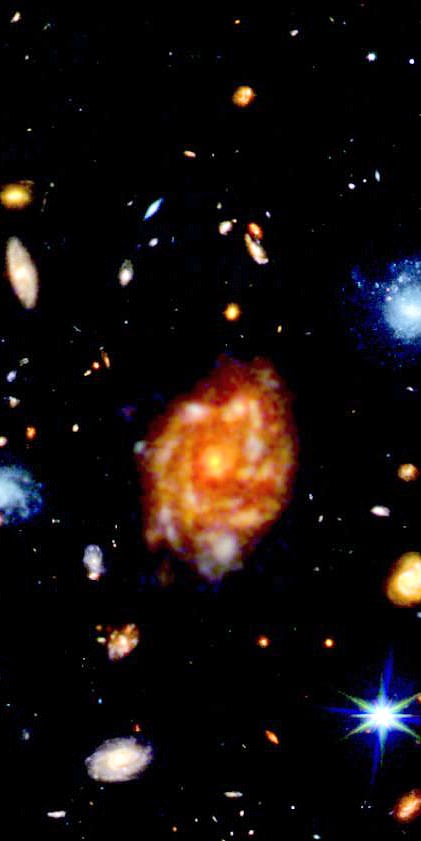
"James Webb Telescope Discovers Colossal Galaxy Defying Galactic Formation Theories"
James Webb Telescope Discovers Massive Galaxy Defying Cosmic Expectations
By Ellyn Lapointe for DailyMail.com | Updated: 22:18 GMT, 17 March 2025
The James Webb Space Telescope (JWST) has uncovered a colossal spiral galaxy, nicknamed the “Big Wheel,” that challenges our understanding of the early universe. Observed as it appeared just two billion years after the Big Bang, this galaxy’s immense size—nearly 98,000 light-years across, rivaling today’s Milky Way—has left scientists baffled.
A Cosmic Anomaly
The Big Wheel’s existence defies current models of galaxy formation. Typically, galaxies of this scale require billions more years to develop. “The Milky Way had 10 billion extra years to grow,” said study co-author Themiya Nanayakkara, an astronomer at Swinburne University of Technology. Yet the Big Wheel achieved similar proportions in a fraction of the time.
Image 1: The Big Wheel Galaxy, captured by JWST, shows a spiral structure similar to the Milky Way but existing just two billion years after the Big Bang.
How Did It Grow So Fast?
Researchers propose that rapid mergers between smaller galaxies in a densely packed region of space fueled the Big Wheel’s growth. “This environment provided ideal conditions for gentle mergers, allowing the galaxy to expand without losing its spiral shape,” Nanayakkara explained. The area around the Big Wheel is 10 times denser than average regions of the universe, enabling frequent collisions that accelerated its development.
Image 2: Lead researchers Sebastiano Cantalupo and Weichen Wang with the Big Wheel image. Their team now seeks more galaxies like it.
Implications for Cosmology
While the Big Wheel could be an outlier, its discovery raises questions about early galaxy formation. If similar giants are found, scientists may need to revise cosmological theories. “Our models might require refining,” Nanayakkara told New Scientist. The team’s findings, published in Nature Astronomy, highlight JWST’s revolutionary ability to probe the universe’s infancy.
Image 3: The James Webb Space Telescope, humanity’s most powerful observatory, enables unprecedented views of the early cosmos.
What’s Next?
The researchers plan to search for more ancient giant galaxies. If they’re common, it could reshape our understanding of cosmic evolution. For now, the Big Wheel stands as a mesmerizing clue—a cosmic “needle in a haystack” that challenges what we know about the universe’s beginnings.
Topics: James Webb Space Telescope, Space Exploration, Galaxy Formation


